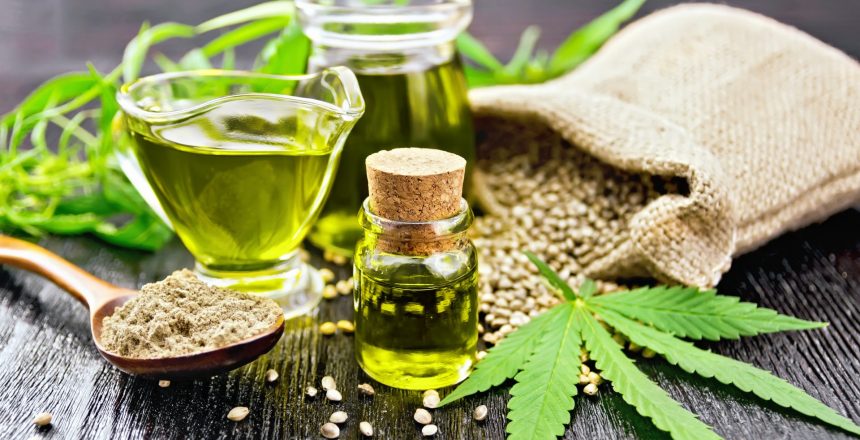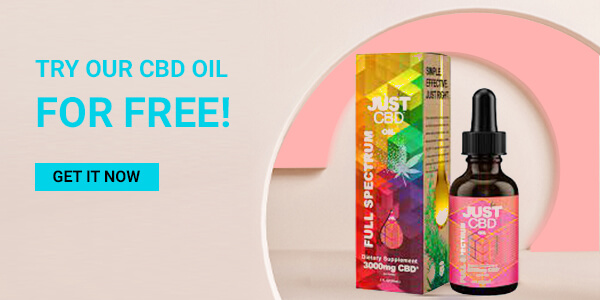Are you looking to incorporate CBD oil into your wellness routine? Read this article to understand more about baking with CBD oil.
CBD or cannabidiol oil has gained popularity since its legalization within the CBD market. There are several ways of consuming CBD, such as sublingual administration, inhalation, topical creams, and CBD edibles. Moreover, Connor (2022) explained that baking with CBD is another fascinating way of consuming CBD. It’s an easier strategy to include cannabinoids in delicacies. Keep reading to learn how to combine CBD into your favorite recipes and take your homemade creations to the next level.
What is CBD Oil?
CBD oil or cannabidiol is a chemical compound or cannabinoid extracted from industrial hemp, as Corroon & Kight (2018) explained. Tetrahydrocannabinol (THC) is the most abundant cannabinoid in the cannabis plant and is associated with causing a high sensation. CBD is the second most abundant cannabinoid but has no intoxicating effects and doesn’t cause a high feeling.
The cannabis plant has two main species; marijuana and hemp. Although both species contain CBD, hemp has it in a higher percentage, with only trace THC levels than marijuana. Thus, hemp is the main source of CBD. Under federal law in the United States, CBD oil is legal, provided it contains less than 0.3% THC levels.
Sekar & Pack (2019) noted that the only CBD medication approved by the Food and Drug Administration (FDA) is Epidiolex. Furthermore, Maroon & Bost (2018) stated that CBD oil had helped patients with various health conditions such as back pain, depression, migraines, and autoimmune diseases.
Shannon & Opila-Lehman (2016) looked at CBD and its effects on anxiety and insomnia. The research showed that while more research is required on long-term dosing, there was significant evidence to support the use of CBD to treat anxiety disorders.
Benefits of Baking With CBD Oil
CBD oil in recipes is an easy and fun way to incorporate pure and natural oil into your daily routine. Also, baking with CBD oil allows the consumer to ingest CBD while enjoying delicious treats such as brownie chip cookies and chocolate. The benefits of baking with CBD oil include;
Simple to Make
When using CBD oil for baking, consumers don’t have to waste lots of time making the cannabutter. Also, you can use CBD isolate, crystals, and tinctures.
Effects That Last Longer
Usually, it takes longer to experience the effects of CBD edibles than it does with any other delivery method such as vaping. However, the results of CBD edibles last longer compared to vaping. When you consume CBD as an edible, it’s released slowly into the system as your body digests it.
Non-intoxicating
CBD oil contains traces of THC levels of no more than 0.3%. Therefore, you can consume CBD edibles without the worry of being intoxicated.
Precise Dosage
Baking or cooking with CBD oil allows the consumer to measure the serving size precisely. When preparing ingredients for baking, you can determine the amount required for intake to attain your desired results.
Rules of Baking With CBD Oil
When baking and cooking with CBD oil, it’s critical to consider the following factors;
Begin With What You Know
It’s advisable to begin with your favorite recipe when baking. Go for easy recipes such as peanut butter.
Mix CBD Oil with Another Cooking Oil
Elmes& Kaczocha (2015) stated that CBD is fat-soluble, meaning that your body absorbs it best when paired with fat-containing foods. Therefore whatever oil you’re into most, whether coconut, avocado, or olive, pairing CBD oil with a carrier oil makes it most effective.
Be Careful With Heat
Study reviews state that cooking heat can potentially lower CBD’s composition and make it less effective. It’s advisable to keep the heat below 320F. Moreover, Attard et al. (2018) noted that CBD is more soluble at low temperatures. It’s unclear and hard to tell what happens to the potency of CBD oil when heated at certain temperatures while cooking or baking. For safety, experts recommend adding CBD oil after the food you’re preparing has been removed from a hot surface to preserve the efficacy of the plant compounds. For example, instead of mixing CBD oil in to cake before baking, you can add it to the icing on the cake. This way, you’re more likely to reap more benefits of CBD.
Observe Patience with the Effects
CBD in food will take your body longer to digest than a dropper full of the tincture under your tongue. Anything digestible must pass through your gut and liver before reaching your bloodstream. Therefore, CBD in food may not be as potent or quick-acting.
Be Careful What You Consume it With
There aren’t enough studies to show that CBD is harmful when consumed with alcohol, and experts say it can even be fun to experiment with CBD cocktails. However, always be careful and mindful of your intake. Also, CBD may interact with other medications, so be careful about this and the dosage.
Conclusion
Baking with CBD oil is a fascinating way to enjoy the benefits of CBD. However, since manufacturers produce numerous CBD products and not all of them observe quality procedures, you should conduct research before using your CBD oil. Ensure the hemp plant is organically grown. Additionally, ensure that your CBD oil is extracted through supercritical carbon dioxide. Other ingredients in your CBD oil should be harmless. Generally, utilize high-quality products that are potent and safe. By so doing, you reap full benefits from your homemade creations. Also, avoid storing your CBD oil in direct sunlight since its composition can be altered. Store your CBD oil in airtight dark bottles or cool and dark places.
References
Elmes, M. W., Kaczocha, M., Berger, W. T., Leung, K., Ralph, B. P., Wang, L., … & Deutsch, D. G. (2015). Fatty acid-binding proteins (FABPs) are intracellular carriers for Δ9-tetrahydrocannabinol (THC) and cannabidiol (CBD). Journal of Biological Chemistry, 290(14), 8711-8721.
Maroon, J., & Bost, J. (2018). Review of the neurological benefits of phytocannabinoids. Surgical neurology international, 9.
Sekar, K., & Pack, A. (2019). Epidiolex as an adjunct therapy for the treatment of refractory epilepsy: a comprehensive review with a focus on adverse effects. F1000Research, 8.
Shannon, S., & Opila-Lehman, J. (2016). Effectiveness of cannabidiol oil for pediatric anxiety and insomnia as part of posttraumatic stress disorder: a case report. The Permanente Journal, 20(4).
Connor, K. (2022). CBD for Your Health, Mind & Spirit: Advice, Recipes, and Meditations to Alleviate Ailments & Connect to Spirit. Llewellyn Worldwide.
Attard, T. M., Bainier, C., Reinaud, M., Lanot, A., McQueen-Mason, S. J., & Hunt, A. J. (2018). Utilisation of supercritical fluids for the effective extraction of waxes and Cannabidiol (CBD) from hemp wastes. Industrial Crops and Products, 112, 38-46.
Corroon, J., & Kight, R. (2018). Regulatory status of cannabidiol in the United States: a perspective. Cannabis and cannabinoid research, 3(1), 190-194.
Anastasia Filipenko is a health and wellness psychologist, dermatolist and a freelance writer. She frequently covers beauty and skincare, food trends and nutrition, health and fitness and relationships. When she’s not trying out new skincare products, you’ll find her taking a cycling class, doing yoga, reading in the park, or trying a new recipe.
- CBD Pills Vs CBD Capsules - August 5, 2023
- CBD Capsules User Manual - August 5, 2023
- Bleugenius Marijuana Strain - July 28, 2023




